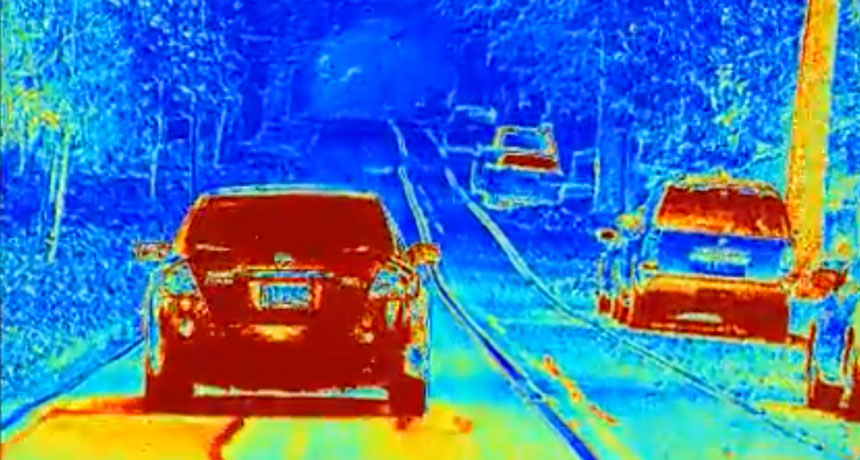Self-driving cars see better with cameras that mimic mantis shrimp vision
A new type of camera more clearly maps objects as the vehicle travels

EYE OF THE BEHOLDER Driverless cars could soon spot danger by viewing the world through polarized cameras that can take in a wide range of exposures at once, much like the eyes of mantis shrimps.
Viktor Gruev/Univ. of Illinois at Urbana-Champaign





